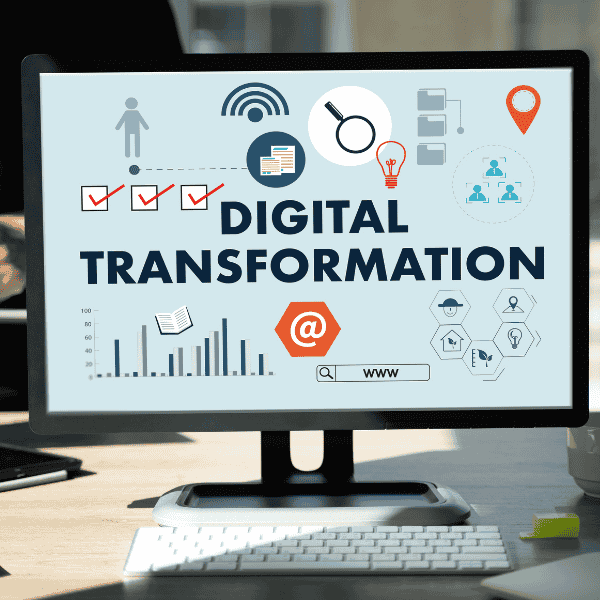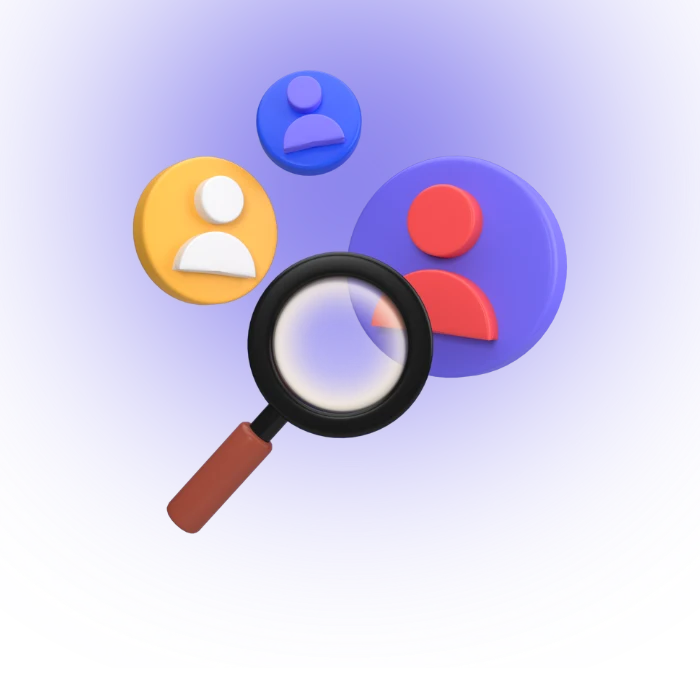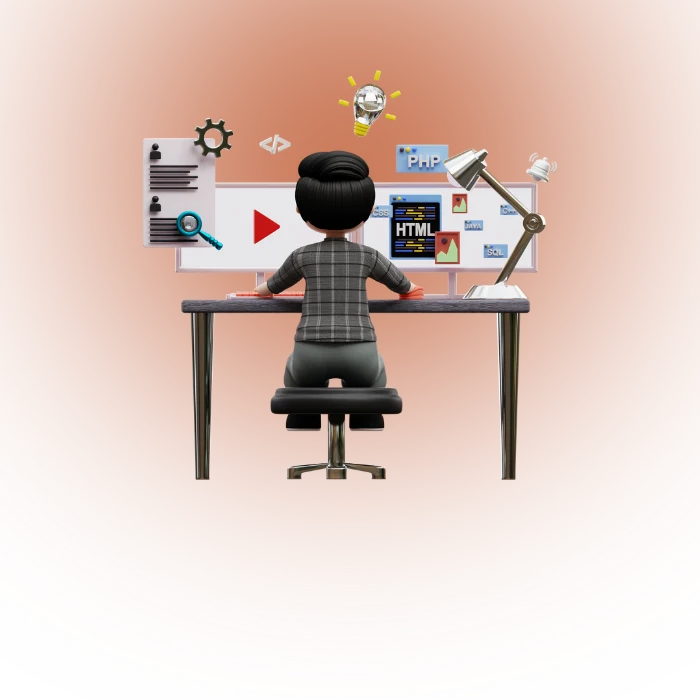Digital product development means building a software product that solves a clear job for a defined user, then iterating until retention proves real value. You plan the work, validate risky bits fast, design the interface and flows, write maintainable code, test without drama, then launch and keep improving with measured feedback.
Product Development Overview
Product development turns market insight into a buildable backlog and a sequence of releases tied to measurable outcomes. The overview is simple on paper: define the audience, align the value proposition, set guardrails for scope, pick a delivery method, and ship iterative versions that move one meaningful metric at a time.
What is Digital Product?
A digital product is software that users adopt to complete work, reduce effort, or gain access to information. It can be a web app, mobile app, API, data service, or a platform that stitches these pieces together into one coherent experience and business model.
Think of a digital product as a living system. Interfaces present tasks, services hold behavior, data models shape truth, and analytics confirm impact. Your job is to keep this system legible for developers and kind for users, while budgets and timelines stay sane.
What is Digital Product Development
Digital product development is the end-to-end practice of discovering a real problem, designing a solution, building it with quality gates, and operating it with confidence. The craft blends product management, UX design, engineering, and QA into one feedback loop that pushes toward retention, revenue, or risk reduction.
The work only counts if a real person can complete a real task and returns tomorrow. Success arrives when the codebase stays changeable, the release train is predictable, and the team can explain what moved a metric this month in plain words without slides.
Digital Product Development Lifecycle (Process)
Step 1: Ideation
Ideation surfaces many solution angles for one painful job. Keep it concrete: list user tasks, blockers, and current workarounds. Convert ideas into tiny value statements tagged with who benefits and how you would prove it. Treat novelty with care, repeatability beats cleverness most days.
For an expense app, ideas might target receipt capture quality, auto-categorization accuracy, or approval time. Each idea needs a measurement hook, like “reduce average approval time from five days to two.” Weak ideas die here by design.
Step 2: Research & Idea Screening
Research validates the problem and shrinks uncertainty around users and demand. Use short interviews, query logs, secondary reports, and small smoke tests. Idea screening weighs impact versus cost and risk, then narrows options to a focused hypothesis you can actually test next sprint.
Run landing pages that pitch one promise and collect interest. Watch search terms and in-product queries. Compare willingness to pay signals from five prospects, not opinions from a room. Evidence is the only language that survives prioritization without politics or wishful thinking.
Step 3: Prototyping
Prototypes turn talk into something touchable. Low-fidelity wireflows validate task order and vocabulary. High-fidelity prototypes check layout density, states, and affordances. The goal is not beauty. The goal is learning where users hesitate, misread, or require a hint you forgot to provide.
Step 4: Product UI/UX Design
Design translates validated flows into accessible interfaces and clear microcopy. Patterns reduce cognitive load. Tokens keep spacing and color consistent. Interaction states explain system intent without a manual. Designers and developers should share components, not toss files over a wall.
Step 5: Application Testing
Quality work prevents late-stage panic. Unit tests protect logic, integration tests protect contracts, and exploratory sessions protect human sense. Automate smoke tests for each deploy. Performance baselines belong in CI to flag regressions before they reach a real device or a paying customer.
Step 6: Development
Development turns validated decisions into maintainable code. Choose frameworks your team can support. Keep boundaries clean between API, services, and data. Feature flags de-risk releases. Versioned APIs respect clients. Observability, not guesswork, drives hotfixes when gremlins appear in prod.
Merge to main behind flags. Run quick CI, publish artifacts, and deploy to a staging enviroment that mirrors prod. Treat tech debt as a budget line, not a regret. Skipping basic docs slows future you more than it speeds present you. It hurts, then it hurts again.
Step 7: Launch
Launch is a controlled exposure, not a cliff. Plan progressive rollouts, dark launches, and seed cohorts. Decide what “healthy” means for the first 72 hours. Prepare rollback plans and comms templates for support. Measure activation and retention before vanity traffic tries to fool you with noise.
Feature flags let you raise exposure gradually and pause without drama. Keep the changelog human. Guide users through what changed and why it helps them. Coordinate marketing, support, and engineering on one timeline with one owner. Smooth launches look boring on purpose.
Step 7: Maintenance
Maintenance keeps value alive. Patch dependencies, rotate secrets, and trim dead code. Review error budgets, not just uptime. Watch usage heatmaps to retire unloved features. Schedule capacity planning ahead of seasonal spikes. Treat migrations as projects with rehearsals, not weekend wishes.
Healthy products evolve without fear. Performance keeps pace, logs stay readable, and new hires can survive the code tour. That quiet confidence is the real payoff for disciplined craft. Future work costs less, and users trust you because the app just works day after day.
Digital Product Development Methodologies
Methodology shapes how work moves from idea to release. You want a method that fits team size, compliance, contract style, and the rate of change in your domain. Choose one on purpose, then tune ceremonies and artifacts to the smallest set that keeps people aligned and safe.
Agile Development
Agile favors iterative delivery, tight feedback loops, and working software over large upfront documents. Teams plan in short cycles, refine the backlog as learning arrives, and ship value in increments. Success comes from discipline in slicing scope and a clear definition of done that everyone respects.
Agile is not a license for chaos. Keep a visible roadmap that ties releases to outcomes. Limit WIP so work finishes. Protect time for refactoring when complexity grows. Review metrics that reflect user success, like task completion time. Agile feels calm when everything has a stable cadence.
Scrum Development
Scrum organizes work into time-boxed sprints with defined roles, events, and artifacts. Product Goals frame the long view, Sprint Goals drive focus, and the Increment proves progress. The 2020 Scrum Guide is the source of truth for roles and rules, and it keeps the framework deliberately light.
Scrum shines when changes are frequent and learning must be absorbed fast. Keep sprint reviews user-facing, not internal show-and-tell. Hold retros that lead to one or two real experiments, not ten vague wishes. The board should mirror reality, or people will stop trusting it.
Waterfall Development
Waterfall sequences phases in a linear order with heavy upfront planning and late integration. It can fit regulated contexts or complex hardware integrations where change is expensive and documentation is a contract. Predictability is traded for slower adaptation when new information arrives midstream.
For a stable domain and fixed requirements, Waterfall reduces coordination overhead. You still need checkpoints with tests and prototypes. Humans uncover misunderstandings only by touching something. Even in linear plans, carve space for discovery, or rework will slip in the back door.
Feature-Driven Development (FDD)
FDD builds around modeling the domain and delivering small, client-valued features in short iterations. It pushes teams to design by feature and keep class ownership clear. The model encourages traceability and keeps architecture honest when complexity and data rules dominate the product shape.
FDD helps when domain logic is rich and workflows are rule-heavy. Keep the feature list crisp and testable. Tie each feature to acceptance examples, not broad statements. Share domain glossaries across squads so vocabulary stays steady. Clear language reduces defects and makes reviews shorter.
Hybrid Approach
Hybrids mix time-boxed planning with milestone gates and compliance docs. Common patterns pair Scrum for day-to-day delivery with stage gates for security, privacy, and legal checks. You get speed in the loop and safety at the boundaries. The blend must be explicit, or friction will multiply.
Write down which artifacts are mandatory and why. Bake threat modeling, performance tests, and data retention reviews into the Definition of Done. Hybrids succeed when teams know which rules bend and which rules never do. Clarity removes debate and keeps momentum without surprises.
Choose Best Approach
| Context | Best-fit method | Why it works |
|---|---|---|
| Rapid change, unclear scope | Scrum | Short cycles absorb learning. |
| Regulated delivery, fixed scope | Waterfall | Traceable docs and gates. |
| Complex domain logic | FDD | Feature modeling tames rules. |
Benefits of Digital Product Development
Benefits show up as efficiency, cost discipline, faster release confidence, and products that match user needs. You do not get these for free. They emerge from steady practices, short feedback loops, and a codebase designed for change rather than ceremony.
Improved efficiency
Efficiency grows when teams cut work in progress, automate the boring parts, and remove handoffs. Shared components and CI/CD reduce cycle time. A small, clean backlog prevents estimation games. Fewer meetings with sharper agendas free hours for building and verifying what matters.
Measure lead time from ticket start to production. Track rework hours to spot unclear requirements. Pair frequently on tricky modules to spread knowledge. Efficiency is a by-product of clarity plus calm focus, not a demand you shout across a stand-up hoping people somehow speed up.
Cost reduction
Costs drop when you validate before building, rightsize infrastructure, and reduce defects early. Cloud guidance like the AWS Well-Architected Framework helps you balance reliability and spend through steady reviews, not last-minute panic fixes that blow budgets quietly.
Kill features that users ignore. Merge services when operational overhead outgrows benefits. Reserve capacity only after a usage trend holds, not on week one. Cost control is math and timing. Right math and right timing makes finance happy without starving performance.
Reduced market time
Time to market shortens when you release small slices under feature flags and keep approvals lightweight. Treat non-functional checks as automated gates, not calendar meetings. Roadmaps with outcome-based milestones let you drop items that do not move the needle, which saves whole weeks.
Use launch-darkly-style flagging or a homegrown toggle to ship code safely. Keep a one-page release checklist that anyone can run. The goal is boring releases. Boring means stable, repeatable, and predictable. Teams that release often stop fearing change and start fixing more important things.
Developing customer-focused products
Customer focus happens when discovery never ends. Pull feedback from support tickets, heatmaps, and session replays. Watch task success and error states, not just click counts. Invite real users to comment on prototypes and early builds. Decide with their words, not just your roadmap.
Lean into accessibility early. Clear labels and generous touch targets help everyone. Inclusive design uncovers insights that improve adoption beyond compliance. Users remember how your product makes them feel when they meet the first bug or a confusing step. Be kind in the tricky moments.
Technologies Used To Build Digital Product
Frontend Frameworks
Pick a frontend stack that matches team skill, runtime needs, and release speed. React with a meta-framework like Next.js gives server rendering and routing. Angular offers batteries-included structure for larger teams. Flutter suits cross-platform mobile with a single UI codebase and consistent visuals.
Strong typing with TypeScript reduces a whole class of runtime surprises. Design tokens and component libraries keep interfaces consistent across surfaces. State management should favor clarity over fashion. Fewer global stores, more local state, and clean boundaries lower mental load for everyone.
Backend Technologies
Backend choices hinge on workload shape. Node.js fits I/O-bound APIs that fan out to many services. ASP.NET Core handles CPU-heavy logic with strong performance and long LTS windows. Python is great for data work and ML services where libraries accelerate delivery. Go or Rust help with lean, fast services.
Datastores should match access patterns. Postgres covers most OLTP needs with ACID comfort. Redis handles caching and queues. Column stores or managed warehouses solve analytics with scale. Observability matters early: logs with context, metrics with sensible tags, traces that follow user requests end-to-end.
AI/ML Integration
ML belongs where predictions improve outcomes measurably. Start with narrow use cases: ranking, anomaly detection, extraction, or routing. Keep feature stores versioned. Ship models behind AB tests and watch lift against a dumb baseline. Human oversight remains mandatory wherever errors carry real risks.
Edge cases break models quietly. Build drift detection and retraining hooks. Keep prompts or model contracts versioned if you integrate LLM features. Treat data consent and retention as first-class requirements. Useful AI looks boring in production: stable, explained, and supervised with care.
Top 5 Challenges in Digital Product Development and How to Overcome Them
1. Changing Requirements
Requirements change because learning arrives late or stakeholders see the product for the first time when it finally feels real. The fix is to invite learning earlier, slice scope thinner, and bake change into the cadence. Clear goals and short feedback loops turn change into fuel, not fire.
Use Sprint Goals to keep focus and reduce churn. Time-box discovery spikes that answer one risky question. Keep a decision log with the why behind scope changes so future debates reuse past judgement. Tighten design-dev pairing, and small demos make surprises less painful for everyone.
2. Technical Challenges
Technical risk hides in integration points, data migrations, and performance under real traffic. Push these risks forward in the schedule. Build a tracer bullet that touches each subsystem. Add instrumentation at the edges. Tiny load tests early reveal scaling limits before marketing invites the internet.
Guard rails avoid late rewrites. Define service boundaries. Version APIs. Set error budgets with alerting that reflects user pain, not machine noise. Run chaos drills for the critical path. People gain calm only after they break things on purpose and practise recovery while stakes stay low.
3. Scope Creep
Scope creeps when roadmap items mix goals with wishlists and no one says no. Solve it with a visible prioritization rule and a hard WIP limit. New requests must trade with current items or wait. The product owner protects the wall and the team protects the cadence. That pact keeps trust strong.
Tie each feature to one metric and one user story that would justify it. If neither exists, the item does not ship. Stakeholders do not lose face when the rule is clear and shared. You can still explore ideas in prototypes without poisoning the release train with half-done features.
4. Resource Constraints
Constraints around budget, skills, or time shape the plan. You cannot wish them away. Right-size scope, automate repetitive steps, and buy instead of build when a commodity solves the problem. Rely on a partner only where their edge beats yours, then keep core knowledge in house.
Transparent capacity helps planning. Publish a calendar of key dates and vacations. Keep a skills matrix to spot single points of failure. Cross-train gently with pairing or rotation. Constraints push teams to design for change and simplicity, which improves quality even when money returns later.
5. User Experience Challenges
UX breaks when screens drift from real tasks, language confuses, or edge states get ignored. Fix it by writing tasks in the user’s words, designing states before pixels, and testing on the same devices your users carry. Error messages should teach the next step and never shame the person.
Five-user tests catch many issues fast, but watch variance based on task complexity and audience (Nielsen Norman Group, 2000; 2021). Keep a backlog label for UX debt. Tackle empty states, loading states, and recovery states as first-class design work, not leftovers added on Friday.
Challenges and Fixes
| Challenges | Solutions |
|---|---|
| Vague requirements | One-pager with success metric |
| Flaky tests | Seeded data, retry budget caps |
| Slow code reviews | Owner rotates daily reviewer |
| Estimate drift | Smaller slices, story spikes |
| Surprise costs | Monthly Well-Architected review |
Tools For Successful Product Development
| Tool | Why it stays in our kit |
|---|---|
| Feature flags | Safe rollouts, instant rollback |
| Playwright | Solid, readable end-to-end tests |
| OpenAPI | Clear contracts, codegen leverage |
| Postgres | Honest defaults, strong ecosystem |
| Grafana | Fast, visual incident timelines |
How Much Does a Product Development Cost?
Cost is a function of scope, team shape, and risk tolerance. A simple single-platform MVP Development with a few screens, one API, and basic analytics can run in the low six figures in the U.S. market, while complex, regulated platforms land higher. Treat every number as a model you tailor, not a promise.
| Package | Typical scope | Team shape | Timeframe | Est. budget (USD) |
|---|---|---|---|---|
| MVP Essentials | 1 platform, 8–12 screens | PM (part-time), Designer, 2 Devs, QA (shared) | 6–10 weeks | $45,000–$95,000 |
| Growth Release | Web + one mobile client, | PM, Designer, 3–4 Devs, QA, DevOps | 12–20 weeks | $120,000–$280,000 |
| Scale & Compliance | Multi-tenant, SSO, audit trails, | PM, Lead Eng, 4–6 Devs, QA, DevOps/SecOps | 20–36 weeks | $300,000–$750,000+ |
Final Thoughts : How To Develop Successful Product
The guide covers out how a small, focused team can move from idea to stable product without burning time or goodwill. Keep the loop short, the artifacts light, and the outcomes visible. When decisions tie back to user tasks and operations stay boring, products grow with less friction and more certainty.
Share one target user, one job they struggle with, and the smallest success metric you want next month. Our Expert Product Team will create two-week discovery and prototype plan you can run or hand to your team.
FAQs
How to Create Effective Product Prototypes?
Start by prototyping the task flow before the visual style, because navigation errors sink products faster than colors. Use low-fidelity wireflows to test copy and decisions, then switch to high-fidelity frames for spacing and states.
How to Build an Effective Product Development Team?
Build a cross-functional team that can discover, design, build, and release without constant handoffs. Keep roles clear and ceremonies light so focus stays on outcomes. Product manager owns goals, a designer owns flows and states, and an engineer owns delivery quality.
Share a definition of done that includes tests, docs, and accessible UI. Pair on risky areas and rotate code reviews to spread context.
Publish a weekly one-pager with decisions and upcoming risks, which keeps stakeholders aligned without meetings that grow too long.
What Development Tools are Worth Using?
Pick tools that reduce uncertainty and speed feedback. Feature flagging platforms allow safe rollouts and fast rollback.
Component libraries with design tokens keep screens consistent across platforms.
OpenAPI contracts align client and server work with shared types.
CI pipelines with Playwright or similar keep regressions visible.
For cloud workloads, a Well-Architected review exposes reliability and cost gaps before they hurt budgets.
How Does AI Helps in Product Development?
AI helps by ranking content, routing support, extracting fields, and predicting risk, which removes toil and surfaces value faster.
What are real-world examples of digital product development?
Real examples include subscription news apps, telehealth visit platforms, and B2B dashboards that track field sales. Our Ontrek build tackled route planning, offline order capture, and role-based reports.






